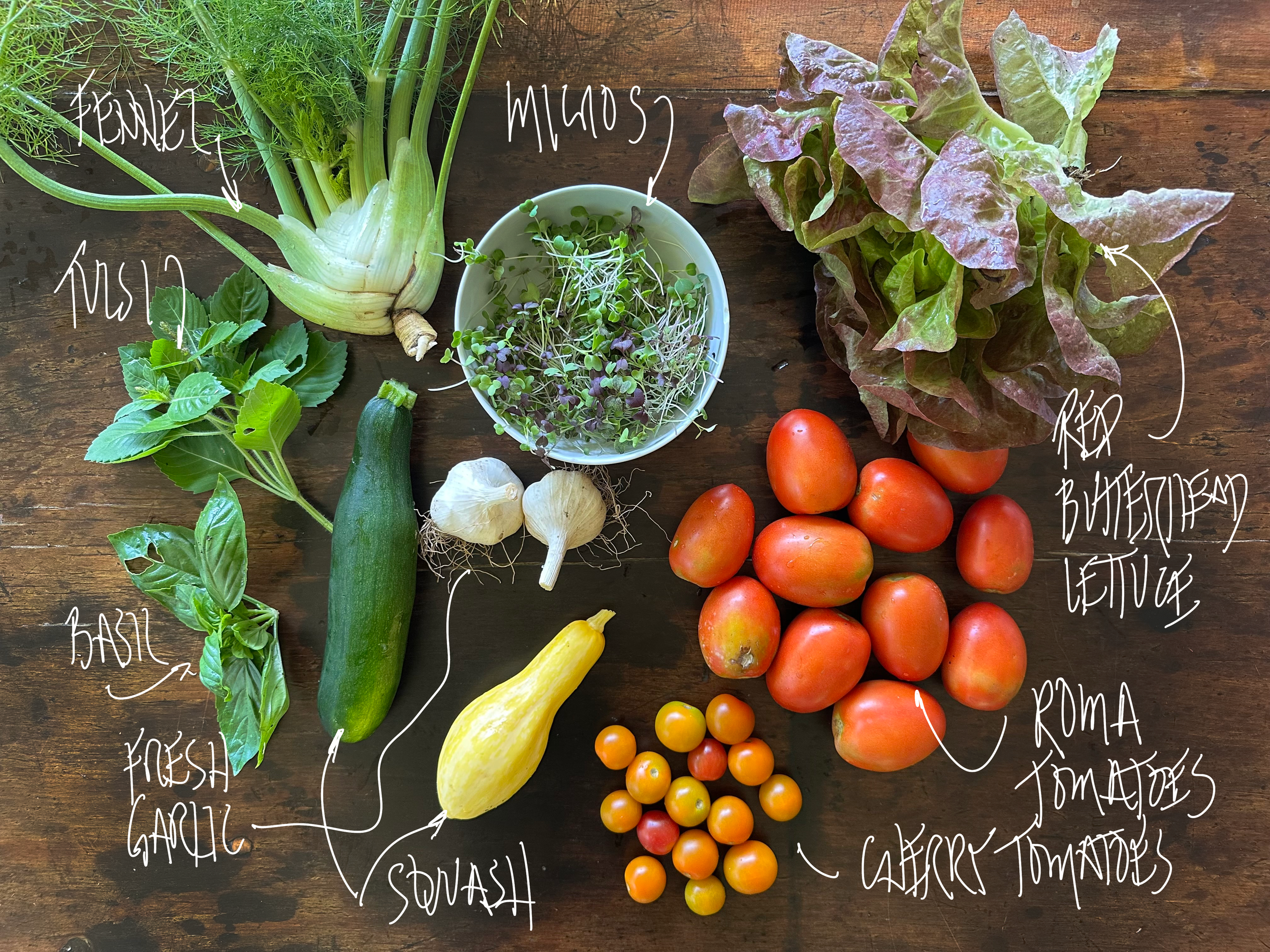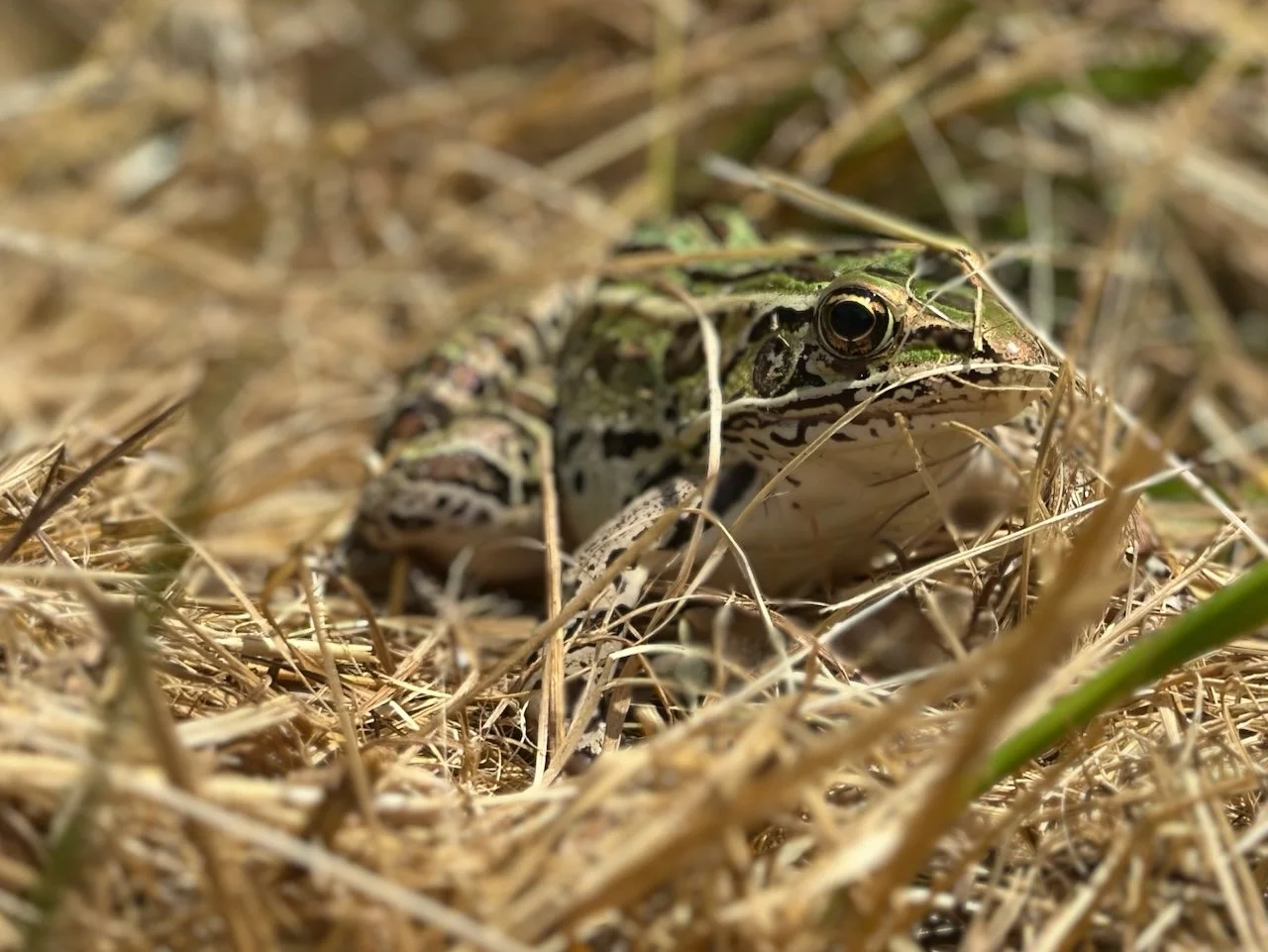2025 Season | Week 11
Summertime in Ohio
Matt, Elandra, and I have been busy preparing for the fall crops. We hope to have them in the ground by the end of this week. In the meantime, the tomatoes are taking off, especially the Roma variety. These are small and meaty—if they aren’t completely ripe, just lay them out on the counter. In a few days, they’ll be perfect for saucing, tomato pies, or salsa. Micros continue to be a treat. And this week marks the beginning of zuccini season. We try to harvest them while they are small, as we think they taste better. Also new this week is our red butterhead lettuce. DELICIOUS and FRESH.
Have a good week.
Almost ran over this little guy whie mowing the big field with the bush hog this week.
-
Celery
Celery 101 – Celery is a member of the Apiaceae family, which also includes carrots, parsnips, parsley, and celeriac. Known for its crisp texture and refreshing taste, celery offers impressive health perks—from reducing inflammation and aiding digestion to helping regulate blood pressure. Its versatility makes it a staple in everything from soups and salads to juices and snacks.
EAT NOW – Keep it fresh and crunchy! Wrap celery stalks in a damp paper towel, then cover them tightly in foil, leaving the ends slightly open. Store in the crisper drawer of your fridge to maintain texture and flavor.
OR LATER – For longer storage, blanch celery pieces in boiling water for 3 minutes, then plunge them into ice water. Drain, pat dry, and freeze in airtight containers or freezer bags.
-
FENNEL 101
Fennel is a crisp, aromatic vegetable with a mild licorice flavor and a satisfying crunch. It's part of the carrot family but looks more like celery with its bulbous base, layered stalks, and feathery fronds. Both the bulb and the fronds are edible and versatile—great raw or cooked.EAT NOW
Slice the bulb thin and toss it into salads for a fresh, anise-sweet crunch. Shave it over pizza or tuck it into sandwiches for extra brightness. The fronds make a beautiful garnish and can be blended into dressings or sprinkled like herbs.OR LATER
Fennel mellows and sweetens as it cooks. Roast wedges alongside chicken or fish, sauté with onions for a simple side, or braise with broth and wine for a soft, savory treat. It stores well in the fridge, unwashed and wrapped in a damp towel, for up to a week—so you can enjoy it fresh today and tender tomorrow. -
Fresh Garlic 101
Fresh-harvested garlic, also known as “wet” or “green” garlic, is garlic that’s been pulled from the ground before it’s fully cured. Unlike the dry, papery bulbs you find in the store, fresh garlic has moist skins, juicy cloves, and sometimes green stalks still attached. The flavor is milder and more delicate than cured garlic, with a slightly grassy, almost sweet note—perfect for early summer cooking.Eat Now
Use fresh garlic anywhere you’d use regular garlic, but celebrate its tenderness! Slice or mince the cloves for sautés, salad dressings, or marinades. The juicy cloves melt beautifully into sauces, and the mild flavor makes it a lovely addition raw in dips or spreads. If the stalks are still soft, you can treat them like scallions—chop and toss into stir-fries, soups, or omelets.Eat Later
If you’re not using it right away, store fresh garlic in a cool, dry spot with good airflow. It won’t last as long as cured garlic—typically a few weeks—so keep an eye on it. To preserve the harvest, you can cure the garlic yourself by allowing it to dry for a few weeks, or peel and freeze the cloves for longer storage. Roasting and storing in oil (with proper safety precautions) is another delicious way to enjoy fresh garlic down the road. -
Microgreens 101
Microgreens are the young, tender seedlings of herbs and vegetables, harvested just after they’ve sprouted their first true leaves. Despite their small size, they pack a big punch—rich in flavor, vibrant in color, and dense in nutrients. Common varieties include arugula, radish, sunflower, pea shoots, basil, and fennel, among many others. Grown in soil or hydroponically, microgreens are typically ready to harvest in 7–21 days, making them one of the fastest crops around.Eat Now
Microgreens are best enjoyed fresh! Sprinkle them over salads, tuck them into sandwiches or wraps, blend them into smoothies, or use them as a finishing touch on soups and eggs. Their flavor ranges from mild and sweet to spicy and bold, depending on the variety. They're an easy way to elevate any dish—both visually and nutritionally.Eat Later
To make the most of your microgreens, store them dry in an airtight container lined with a paper towel in the refrigerator. Most varieties will stay fresh for up to a week. If you get a living tray, you can harvest them as needed, ensuring peak freshness. Add them at the last moment when cooking or plating to preserve their delicate texture and vibrant color. -
Red Butterhead Lettuce
Lettuce 101
Red Butterhead Lettuce is a tender, mild, and slightly sweet variety of butterhead lettuce with soft, loosely formed heads and deep burgundy-tipped leaves. Its velvety texture and delicate flavor make it a favorite for gourmet salads and fresh wraps. Like other leafy greens, it’s packed with nutrients—offering a healthy dose of vitamins A and K, antioxidants, and hydration.Eat Now
Enjoy Red Butterhead fresh and raw to experience its soft texture and subtle taste. It’s perfect as the base of a salad or used whole-leaf as a wrap for sandwiches, tacos, or grilled veggies. Rinse gently and pat dry—its leaves are delicate.Eat Later
Store unwashed Red Butterhead in the fridge wrapped loosely in a dry paper towel and placed inside a sealed container or produce bag. Use within 3–5 days for best texture and flavor. Avoid crushing the leaves, as they bruise easily.Recipes
Simple Butterhead Salad: Toss with shaved radishes, goat cheese, toasted walnuts, and a light lemon vinaigrette.
Lettuce Wraps: Use whole leaves to wrap grilled chicken, rice noodles, herbs, and a drizzle of peanut sauce.
Red Butterhead Cups: Fill with tuna or chickpea salad for a light, low-carb lunch.
-
SQUASH 101 - Because of their bland flavor, summer squash lend themselves to many cooking applications, taking on the flavor of whatever they’re cooked with. Try using them as a substitute for rice, pasta or potatoes. Or, slice tender, young squash into salads, stir-fries, or with pasta. The are also great on the grill!
EAT NOW - Gently scrub away dirt. Slice off the tops. Can be roughly chopped, sliced, or grated for a variety of recipes from steamed to stuffed to stir-fried!
OR LATER - Store squash unwashed in a perforated plastic bag in the vegetable bin for about a week and a half. Freeze pureed (seeded) zucchini in Ziplock bags, and grated zucchini for use in breads and muffins.
RECIPE
-
TOMATOES 101 - Probably the most versatile fruit in the garden, tomatoes can be used in countless ways - salsa, gazpacho, sauces, slow roasted, puree and even a bloody Mary. Ours are grown for taste so eat them right out of the crate.
EAT NOW - Store unripe tomatoes upside down on a plate at room temperature until they fully ripen. Wash, pat dry, slice or dice, and enjoy the taste of a real tomato.
OR LATER - Refrigerate any fully ripe tomatoes - allow to come to room temp before serving. To freeze, first blanch and dunk in ice water to cool. Remove stems and core. Transfer to storage bags, seal and place in freezer.
To blanch, bring a pot of lightly salted water to a rolling boil. While you wait for boil, prepare an ice bath. Once boiling, drop veggies into water - water should return to boil within a minute otherwise you have too much veg for the water. Once boil has returned, cook for 1-5 min until veg has a vibrant color. Immediately put into ice bath to stop cooking.
RECIPES


